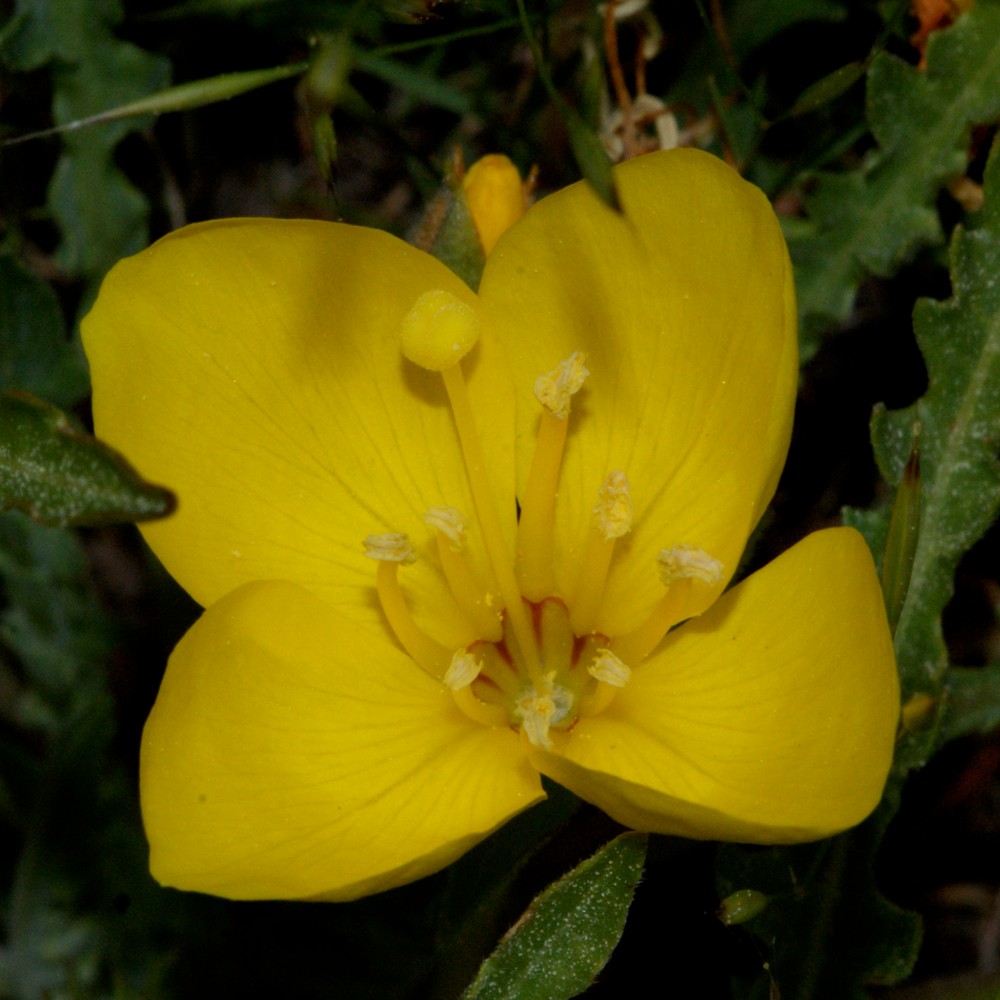Yellow evening primrose
(Oenothera flava)

Description
Oenothera flava, commonly known as the yellow evening primrose, is a species of herbaceous perennial plant belonging to the family Onagraceae. It is native to the southeastern United States, including Florida, Georgia, and Alabama. The plant is known for its attractive yellow flowers that bloom in the evening, giving it its common name. Taxonomy and Nomenclature Oenothera flava was first described by the American botanist Asa Gray in 1886. The genus Oenothera belongs to the family Onagraceae, which includes about 650 species of flowering plants. The name Oenothera is derived from the Greek words "oinos" meaning wine and "ther" meaning huntress, referring to the ancient belief that the plant could cure the effects of too much wine. Description Yellow evening primrose is a herbaceous perennial plant that grows up to 2 meters in height. The leaves are lanceolate, 10-25 cm long, and 2-5 cm wide, with toothed edges. The stem is erect, branched, and covered in fine hairs. The plant produces a taproot that can reach up to 1 meter in length. The flowers are bright yellow, 4-6 cm in diameter, with four petals and a yellow center. The flowers open in the evening and close by morning. The plant blooms from May to September. Distribution and Habitat Oenothera flava is native to the southeastern United States, specifically Florida, Georgia, and Alabama. It can be found growing in a variety of habitats including wetlands, disturbed areas, and along roadsides. The plant prefers well-drained soils but can tolerate a range of soil types, including sand and clay. Oenothera flava is a versatile plant that can grow in different environments, making it adaptable to different conditions. However, it is important to note that it can become invasive in some areas and may need to be controlled to prevent it from spreading too rapidly. Cultivation Yellow evening primrose is a popular ornamental plant in gardens and landscaping. It is easy to grow and propagate, making it a popular choice for gardeners. The plant prefers full sun to partial shade and well-drained soils. It can be propagated by division, seed, or cuttings. The plant can become invasive in some areas, so care should be taken to control its spread. Uses Oenothera flava has several uses, including medicinal, cosmetic, and ornamental. Medicinal uses: The plant has a long history of use in traditional medicine, including use by Native Americans. The plant was used to treat a variety of ailments, including coughs, colds, and wounds. The plant contains several compounds with medicinal properties, including flavonoids and essential fatty acids. The oil extracted from the seeds is used as a dietary supplement and is believed to have anti-inflammatory and immune-boosting properties. Cosmetic uses: The oil extracted from the seeds of Oenothera flava is also used in cosmetics and skincare products. Due to its emollient and moisturizing properties, the oil is added to creams, lotions, and soaps. Ornamental uses: Oenothera flava is a popular ornamental plant in gardens and landscaping. It is easy to grow and propagate, making it a popular choice for gardeners. The plant produces beautiful yellow flowers that bloom in the evening, giving it its common name "yellow evening primrose." Oenothera flava adds beauty and diversity to gardens and landscaping designs. Overall, Oenothera flava has a range of uses and benefits, from its ornamental value to its medicinal and cosmetic properties. Conservation Status Yellow evening primrose is not currently listed as threatened or endangered on any global or regional conservation status assessment. However, like many plant species, it is vulnerable to habitat loss and degradation due to human activities, including urbanization and agriculture. The natural populations of Oenothera flava should be monitored to ensure that they are not declining or becoming threatened in the future. Conservation efforts should be undertaken to protect the species and its habitat, such as protecting wetlands and natural areas where the plant grows, and controlling invasive species that may outcompete or harm Oenothera flava. Additionally, efforts should be made to raise awareness about the importance of Oenothera flava as a native plant and its potential benefits, to promote its conservation and sustainable use. Conclusion Oenothera flava is a beautiful and versatile plant that has been used for centuries for medicinal and cosmetic purposes. Its attractive yellow flowers and ease of cultivation make it a popular choice for gardens and landscaping. However, care should be taken to control its spread and protect its natural habitat.
Taxonomic tree:







